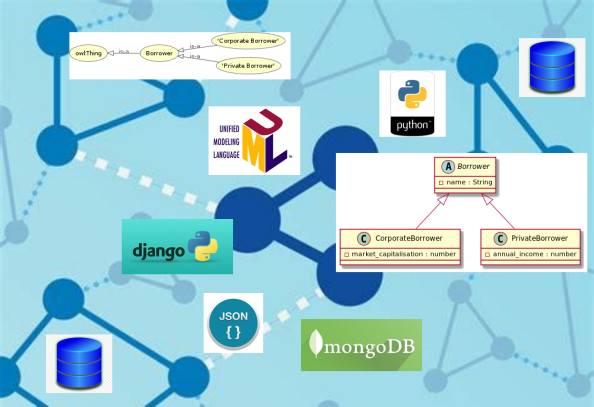Class Inheritance in Data Science
Object-oriented programming and techniques (OOP) such as using classes and inheritance are common in many application programming environments but don't travel well outside computer memory. When considering data science tasks and objectives the transition from object hierarchies to data structures (and vice versa) is not always straightforward. In this short course we explore how some programming languages, data formats, database API's and web frameworks handle hierarchical classes.
Summary
In this short course we explore how some programming languages, data formats, database API’s and web frameworks handle hierarchical classes.
Content
Object-oriented programming and techniques (OOP) such as using classes and inheritance are common in many application programming environments but alas don’t “travel well” outside computer memory. The potentially intricate relationships of objects (both the data they hold and the meaning and possible uses of the data) are not easy to transfer (except of-course by full replication of code and data). Hence when considering data science tasks and objectives that involving exchange of data, the transition from object hierarchies that live inside memory, to data structures that can be exchanged with another computer is not straightforward.

In this short course we explore how some popular programming languages, data formats, database API’s and web frameworks handle hierarchical classes. The main aspect of OOP we are interested in is class inheritance, that is using higher level (more general) classes before specifying lower-level classes that derive from those. The topics we will cover are as follows:
- OOP Concepts in Data Science (A brief introduction with focus on properties, not methods)
- UML Class Diagrams (How to represent object hierarchies graphically)
- Objects in Python (The easies way to OOP!)
- JSON and JSON Schema (Serializing objects to file)
- Other languages (A brief discussion of other relevant OOP platforms for data science)
- Database Table Inheritance (Patterns for storing hierarchical data in relational databases)
- PostgreSQL INHERITS (The native functionality of Postgres supporting inheritance)
- Django Abstract Classes (Object hierarchies in Django’s ORM)
- Inheritance in MongoDB (Linked Objects in Document Stores)
- OWL Classes and Subclasses (Inheritance in OWL Ontologies)
- Mixing Python and OWL (From OWL to Python and Back)
- Review / Summary
Who Is This Course For
The course is useful to:
- Data Scientists / Data Engineers
- Quantitative Analysts / Risk Managers
How Does The Course Help
Mastering the course content provides background knowledge towards the following activities:
- Understanding how class inheritance is handled in the lifecycle of complex hierarchical data set across a representative sample of different tools and platforms
- Implementing practical approaches for preserving relational information when exchanging data
What Will You Get From The Course
- You will be able to confidently discuss the topic of hierarchical data structures in different data science contexts
- You will be able to contribute to the specific use cases mentioned above
Course Level and Type
This course is part of the Data Science family.
- This is a Core Level course in Data Science, which means that good grounding at Introductory level to various data science topics is a prerequisite for making the most out of this course.
- This is a Technical course which means various technology elements (programming languages, data formats, databases) are needed as background for mastering the material.
| Introductory Level | Core Level | Advanced Level | |
| Non-Technical | |||
| Technical | DAT31063 |
If you have not taken an Open Risk Academy course before, the CrashCourse Academy Demo provides a quick overview of the Academy.
Course Material
The course material comprises the following:
- Twelve online readings (+ a summary review)
- Embedded exercises dispersed in each section
- An online repository with scripts and data files
Time Requirements and Important Dates
- The course is self-paced and can be undertaken at any point. Depending on your background knowledge and familiarity with the tools used it might require a commitment of about one or two days total.
Where To Get Help
If you get stuck on any issue with the course or the Academy:
- If the issue is related to the course topics / material, check in the first instance the Course Forum (Chat)
- If the issue is related the operation of the Open Risk Academy check first the Academy FAQ.
- If the issue persists contact us at info at openrisk.eu
Enroll and Get Started with DAT31063